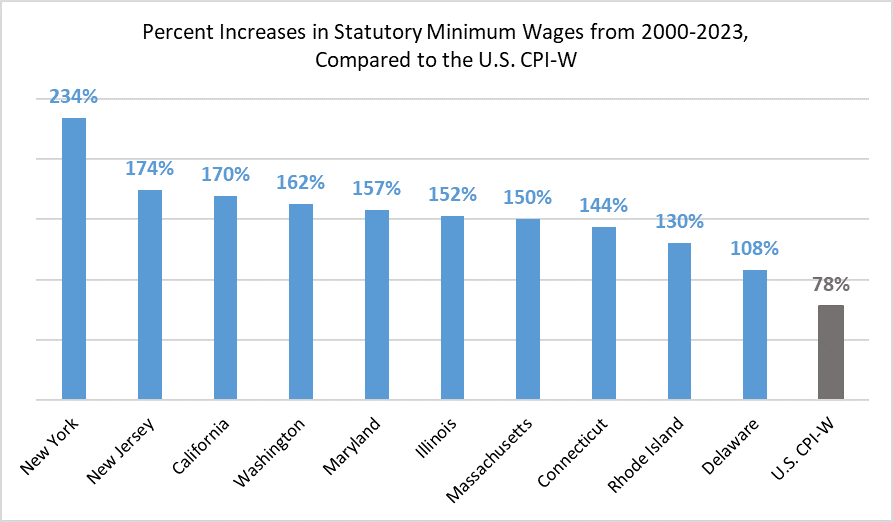As the debate over how high minimum wages should reach continues, eyes are on New York as progressive lawmakers push for a forty percent statutory increase to $20 per hour before tying the rate to inflation.
Proponents of the bill argue that New York’s minimum wage has fallen behind inflation and therefore the rest of the country in terms of purchasing power for employees. While New York is the focal point, the outcome of the Empire State proposal will inform progressives’ activity in many other blue states across the country over the next year.
Activists in Massachusetts are already eyeing legislation to enact the same hike there, and setting up ballot measure committee infrastructure for 2024 if the legislature fails to act. California already has an $18 minimum wage initiative certified to appear before voters in the 2024 election.
But how do these states with already-progressive wage measures actually compare to inflation?
States that have enacted plans to reach the activist-dubbed “Fight for $15” wage target have all raised wages at double (or more) the rate of inflation over the last two decades. Since 2000, the United States inflation rate has climbed roughly 78 percent. Top state wage markets have far outpaced that – New York’s statutory minimum wage rose 234 percent over the same period, New Jersey’s wage has grown 174 percent, and California’s has grown 170 percent.
See the full group of $15 wage adopters here:

Even Florida, which just adopted a path to $15 in 2020, has already seen its statutory minimum wage rise faster than inflation. Since it began raising its minimum wage in 2006, the minimum wage has climbed 72 percent, compared to only 51 percent inflation during the same time frame.
These minimum wage growth rates even outpace regional inflation measures, more tailored to economic conditions in specific areas of the country. Inflation in the Northeast grew only 76 percent, only 68 percent in the Midwest, 77 percent in the South, and 86 percent in the West.
Aside from the growth in the required minimum wages, many employees are seeing wage boosts beyond these mandates. Recent research finds that most employees starting out jobs at the minimum wage earn raises within 1 to 12 months of being on the job.
On the contrary, three decades of minimum wage research shows spiking mandated wages too high can cause serious job loss for those affected by minimum wages.
Before plunging states into uncharted minimum wage territory, lawmakers should consider the economic reality of wages, inflation, and potential consequences.
